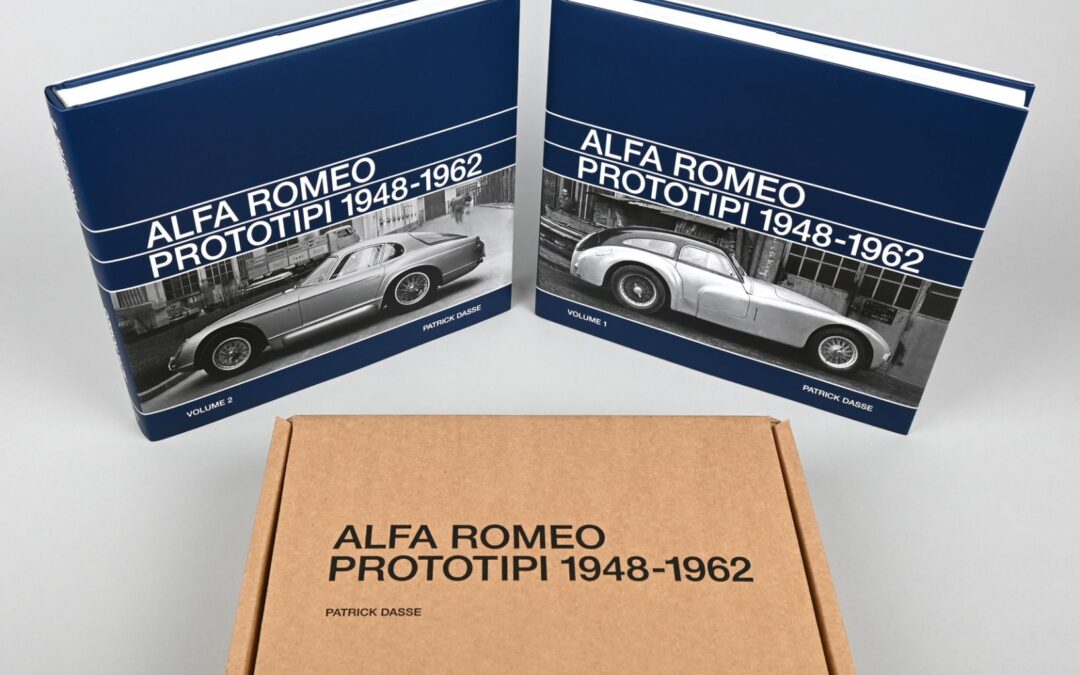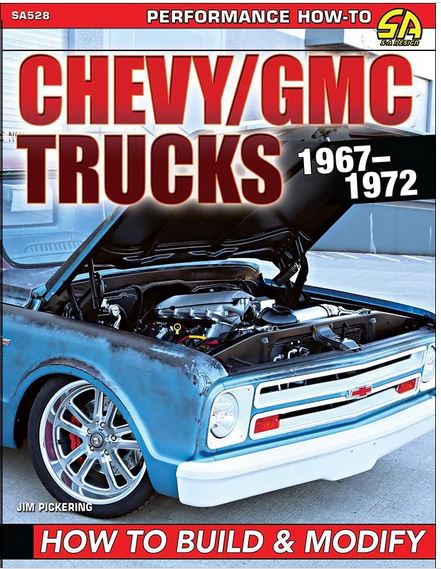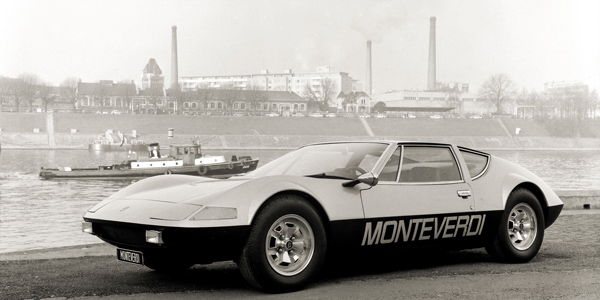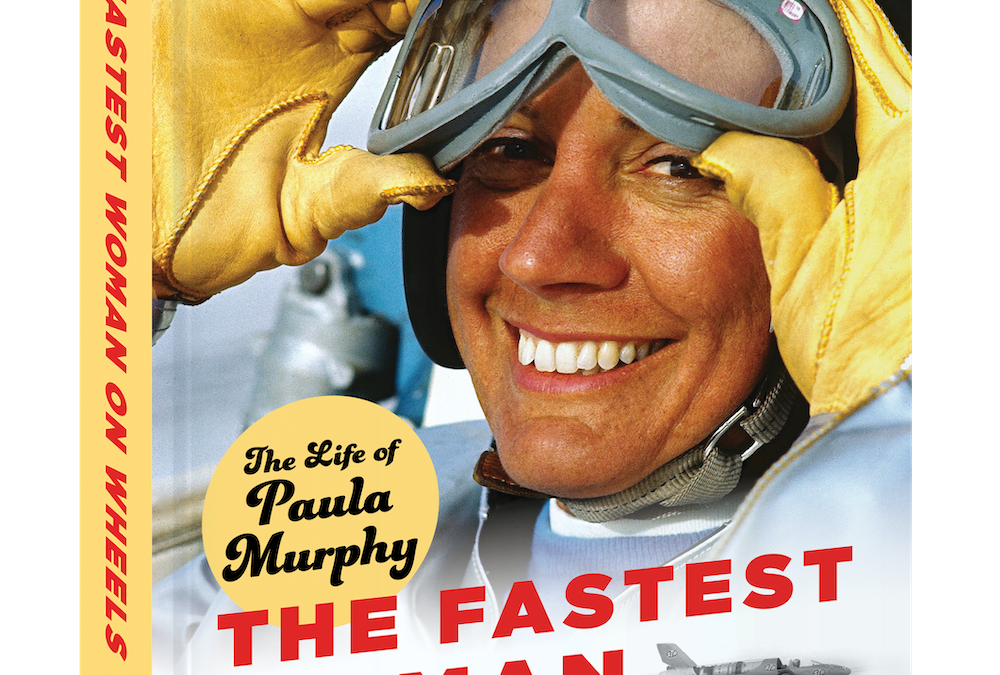
A fearless pioneer and a versatile and gifted driver, Paula Murphy was the first woman to pilot a jet car to a Bonneville Salt Flats speed record, the first woman to make laps at famed Indianapolis Motor Speedway, and the first woman to secure an NHRA Funny Car license. Throw in driving a Pontiac Sunbird literally around the world, nearly dying at the helm of a rocket car, and scoring closed-course speed records at NASCAR’s famed Talladega Superspeedway behind the wheel of cars driven by both Richard Petty and Fred Lorenzen, and you might be starting to scratch the surface of her incredible life.
Author Erik Arneson worked directly with Murphy and some of the biggest names in motor sports to dive deep into her story and relay to the world the impact this single mother from Ohio had on the world of racing. If you find the list of feats above impressive, add the Baja 1000, Mobil Economy Runs, Monaco, Union/Pure Oil Performance Trials, as well as high-speed stunts on horses, sailboats and a snowmobile and you’re starting to get close. Jump in—The Fastest Woman on Wheels is one hell of a ride.

This book explains how modern Formula 1 cars work and demystifies the extraordinary technology they contain.
By meticulously dissecting an F1 car into its constituent components, the author describes the design, engineering and function of every element, enabling the reader to develop a full understanding of how it all comes together to form a competitive package. The text is expertly written to satisfy both the engineering-minded reader as well as any enthusiast of the sport who wants to delve deeper, and supplemented by a superb range of close-up photographs, technical illustrations and diagrams.
- Chassis: design and manufacture; survival cell, fuel tank, impact structures, stiffness.
- Aerodynamics: principles, front and rear wings, turning vanes, sidepods, floor, wheels and their effect, brake ducts, suspension components, diffuser, Drag Reduction System (DRS).
- Suspension, steering and brakes: suspension layout, geometry and adjustments; steering wheel, column and geometry; brake hydraulics, brake-by-wire system, discs, calipers, pads and cooling.
- Power unit: the hybrid era, Internal Combustion Engine (ICE), Energy Recovery System (ERS), fuel.
- Transmission: clutch, gearbox, differential, driveshafts.
- Electronics: starting system, Electronic Control Unit (ECU), sensors, radio and data communications, cockpit display, cameras.
- And more: wheels and tyres; hydraulic system; safety equipment; cockpit controls.
- Chapters about car design and set-up.
- Use of analysis and simulation techniques such as computational fluid dynamics (CFD), wind-tunnel testing and rig testing. All F1 fans will find this book a deeply rewarding companion to enhance their appreciation of the sport.
All F1 fans will find this book a deeply rewarding companion to enhance their appreciation of the sport.
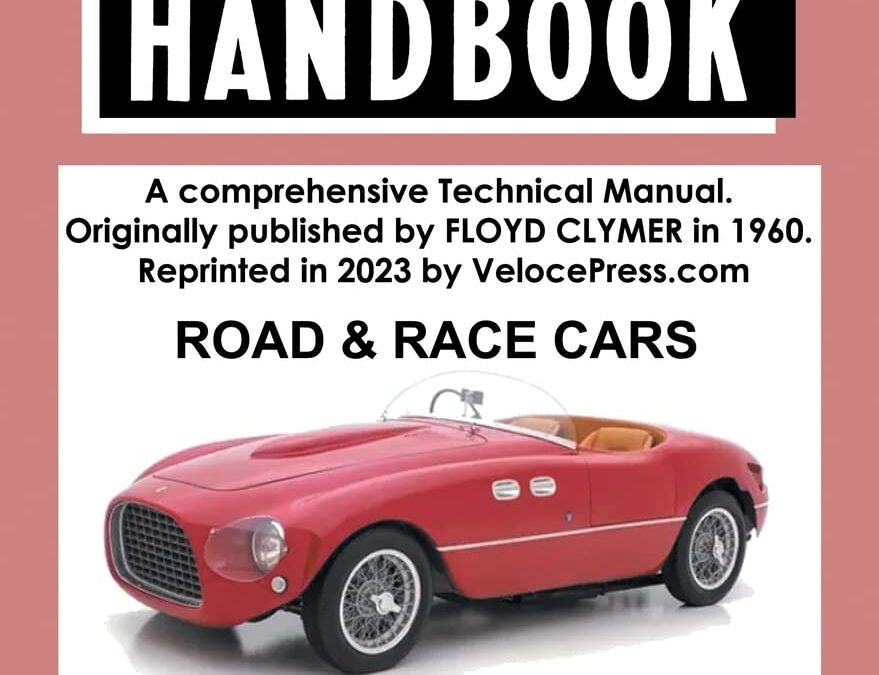
174 pages with 145 illustrations, diagrams and charts, size 6-5/8 x 10-1/4 inches. This is a publication for those Ferrari enthusiasts that are tired of oversized and often overpriced coffee table books filled with page after page of photos of red Ferrari’s and not much else.
This book contains all the technical data and statistics for the majority of the 1948 to 1958 Ferrari road and race cars. It was compiled by a knowledgeable author who lived in Modena at the time that these cars were being constructed, who was personally acquainted with Enzo Ferrari and had access to the factory documents during that time period. It includes the author’s road test experiences, technical specifications, tune up, adjustments, maintenance and repair information, detailed technical drawings, exploded views, wiring diagrams and lubrication charts. This book is a ‘must have’ for any Ferrari enthusiast or lucky owner of one of these early cars and should be in the library of any true Ferraristi. Originally published by Floyd Clymer in 1960 under the similar title of ‘The Ferrari Owner’s Handbook’, its description left much to be desired. For example, of the 174 pages there are 90 pages that are much closer to a repair and maintenance manual. Consequently, it’s more of a technical manual than a handbook.
There are seven sections that cover both the road and race cars constructed by Ferrari from 1948 to 1958.
- Section 1 – The authors driving experiences of the Type 166, Type 342 and 340 America and Type 375 America.
- Section 2 – Specifications for 41 road and race cars constructed by Ferrari from 1948 to 1958.
- Section 3 – Repair, Maintenance and tune up information.
- Section 5 – Valve Timing and Carburetor data.
- Section 6 – Acceleration times.
- Section 7 – Detailed component drawings, exploded views, Wiring Diagrams, Lube charts etc.

Discover a fascinating array of special edition Camaros written by Chevrolet historian and COPO authority, Matt Avery.
Chevrolet’s iconic Camaro arrived in the fall of 1966 and, although tardy to market, it came ready to mix things up in the wildly popular “pony car” segment. Ford’s Mustang was a runaway success, but this new competitor reined in momentum by offering customers an even closer friend of driving enthusiasts.
A credit to General Motors, the Camaro charged hard out of the gate, becoming an instant hit. In each of its first three years, it sold almost a quarter million units, causing a decline in sales for the crosstown Detroit rival. In the decades to follow,
Chevy crafted Camaro variants to suit everyone with enterprising hot rodders and performance tuners always taking it one step further. Enter the high-octane world of Camaro special editions.
Driven to achieve their own competition success and following the high-revving demands of enthusiasts, numerous Camaro special editions have been produced over the years, becoming some of the most collectible cars of all time.
Covered here are not only the factory models such as Indy 500 and Brickyard 400 pace and festival cars, ZL1s, anniversary editions, IROC-Zs, Player’s Challenge, Hot Wheels editions, Z/28s, and RS/SS cars. Also, Camaro Special Editions covers the legendary COPO cars and dealer go-fast specials from builders including Yenko, Dana, Nickey, Berger, Baldwin-Motion, Gorries, and Dick Harrell.
More modern performance editions are covered as well with Callaway, SLP, SVE, GMMG, Earnhardt, and more. Detailed information is provided on the most notable models from 1967 to today, including build numbers, production specs, and their collectability.
This book is a must-have resource for the Chevy and Camaro faithful.
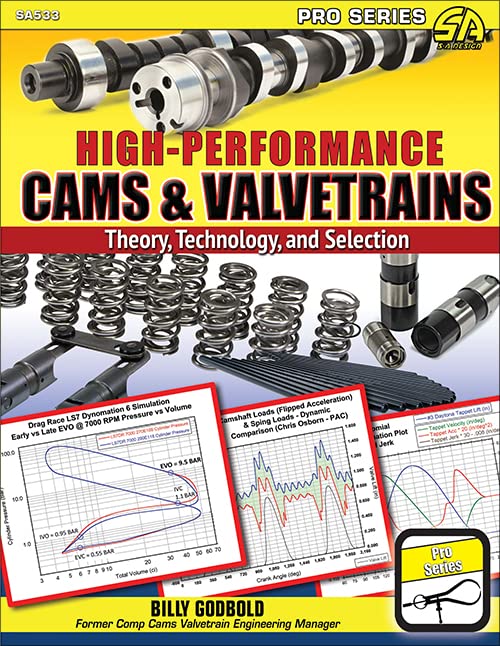
Understand the “magic” of how optimized camshafts extract the most performance from every engine component, eliminating valvetrain guesswork.
Camshafts are the coach and conductor of any four-stroke engine from early flatheads to modern Formula 1. Performance engines are amazingly sensitive to how and when the valves to the combustion chamber open and close. The valvetrain configuration and flow characteristics may change significantly between applications, but the fundamental principles are universal. This allows the language, setup, dynamics, energy, and pressure aspects of a valvetrain to be covered in a way that is just as useful for optimizing a sub-15-hp go-kart engine as it is on a 500-plus-hp street engine or modern 1,500-plus-hp NHRA Pro Stock engine.
In High-Performance Cams and Valvetrains: Theory, Technology, and Selection, farm-kid-turned-physicist Billy Godbold combines his quarter-century of experience with valvetrains at Comp Cams, Lunati, Crane Cams, and Edelbrock with the techniques he uses with professional teams in NASCAR, the NHRA, road racing, dirt-track racing, offshore racing, and land speed racing. He guides you to think about any valvetrain system with his perspective. Often lighthearted and filled with analogies, this book endeavors to make complex concepts easy to understand without watering down important details.
Specific configurations and applications are covered, providing techniques and examples for optimizing camshafts and the valvetrain around intakes, headers, superchargers, turbochargers, fuels, carburetors, and modern EFI applications. If you are planning or building a performance engine, or if you just want to know the science behind how cams and valvetrains work, this book is an indispensable resource.

As World War II drew to a close, America’s premier fire apparatus builder–the American-LaFrance Foamite Corp. of Elmira, N.Y.–bet the company’s future on its radical new cab-ahead-of-engine 700 Series fire engines. In a spectacular gamble to capture the superheated postwar market, all of the company’s existing products were discontinued and its customers were essentially told to “take it or leave it.” This bold gamble paid off and 700 Series rigs soon filled firehouses across the nation, sweeping aside all competitors and ultimately defining the breakthrough 700 as “America’s Fire Engine.” This is the first comprehensive history of the game-changing 700. Individual chapters detail not only each of the eight major vehicle types but also the origins, design controversies, manufacturing, and marketing of the 700 and short-lived transitional 800 Series. The book includes a meticulously researched registry of every 700/800 series apparatus delivered, supported by many interpretive tables detailing production, specifications and major fire department fleets.
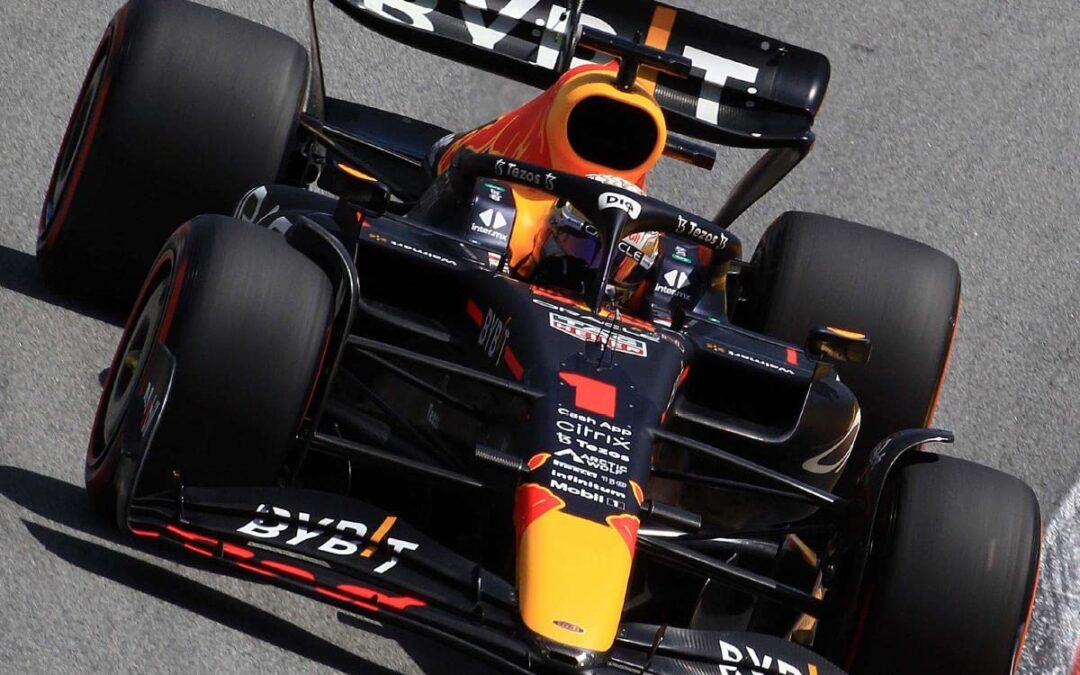
72nd YEAR OF PUBLICATION
Another record-breaking 22 Grand Prix season saw Red Bull Racing and Ferrari go head-to-head with some spectacular races and epic drives from all four drivers, each one winning one or more races. Mercedes with Lewis Hamilton and new recruit George Russell struggled for most of the season with aero and relentless porpoising until mid-way through the season when their performances improved and some notable qualifying and race results appeared, but far too late to challenge for the top spot.
There were some flashes of brilliance from the midpack consisting of Alpine, McLaren, Alpha Tauri, and Alfa Romeo, but Aston Martin, Haas, and Williams continued their struggle for consistency.
Authors Tony Dodgins and Maurice Hamilton, combining 80 years of F1 expertise, examine each round in depth. Full race reports are backed by detailed results, including lap charts and tire strategies.
The nuances of F1’s designs and development are analyzed team by team by the much-respected Mark Hughes, enhanced by Adrian Dean’s handsome F1 car illustrations.
Motor racing’s other major categories are also fully covered: Toyota’s WEC and Le Mans sports car successes; the closely fought Formula 2 and Formula 3 championships, featuring emerging young talent from around all continents of the world; and the tightly fought Formula E series for electric powered single seaters.
AUTOCOURSE includes all the hectic action from the top Touring Car series – the World Touring Car Cup and the British Touring Car Championships as well as the DTM Series running GT cars from Audi, Mercedes, BMW and Ferrari.
From America, Gordon Kirby recounts a thrilling Indycar series, featuring a mix of youthful talent such as Alex Palou and Pato O’Ward, both of whom vying to overturn the established veterans who have dominated proceedings over the past decade. The ever-popular NASCAR stock car series ran from February to November with barely a weekend’s break, to feature more than forty races before the final championship play-off round at Phoenix, Arizona.
In a single essential volume, AUTOCOURSE provides the most comprehensive record of world motor sport, complete with full results not found anywhere in a single volume.
It is required reading for all motor sport fans worldwide.
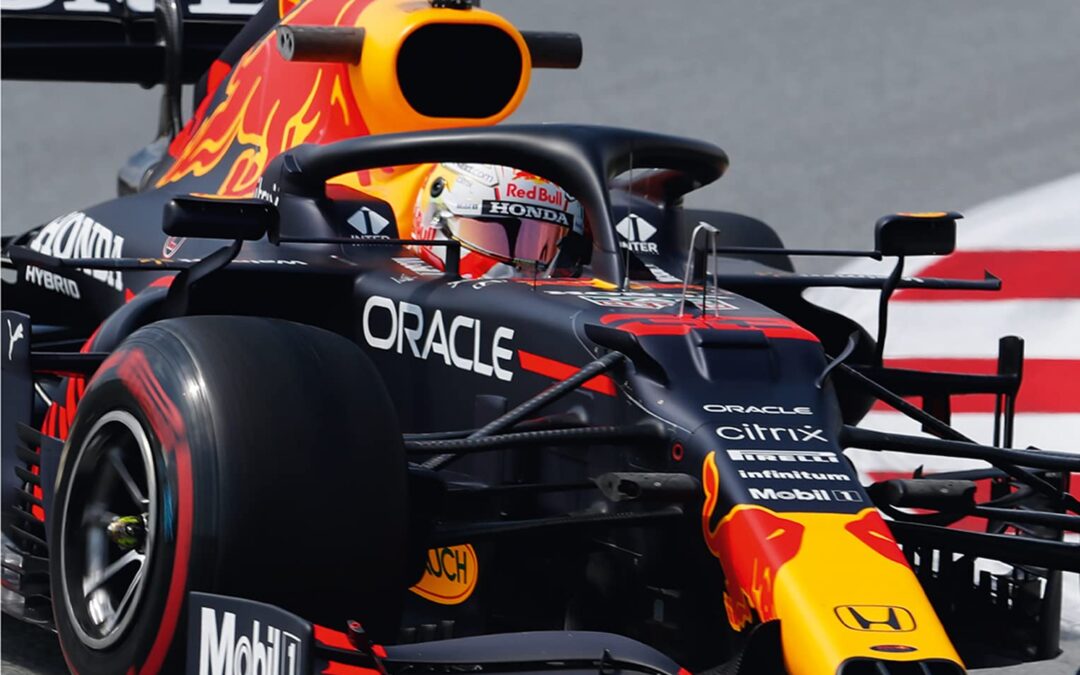
71st YEAR – First published in 1951 – The longest running motor racing yearbook. Independent and authoritative editorial combined with the sport’s finest photography Despite the pandemic, AUTOCOURSE celebrated its 70th year of publication in 2020, a year turned on its head by Covid-19. Thanks to the FIA and racing’s management, F1 was rescued, with a compelling 17-race championship spanning Europe and the Middle East. For 2021 a record 22-race schedule was planned, and despite changes to venues, the F1 championship was very much up and running by March 2021. Mercedes and Lewis Hamilton – now the winningest driver in history – broke more records. The Briton smashed through the 100 pole-position barrier, and moved inexorably toward a century of Grand Prix wins in the face of a real championship challenge from Max Verstappen. Red Bull Racing and Honda seemed to have all but matched Mercedes to provide the fans with a thrilling wheel-to-wheel battle, which would end up with some controversial collisions as the season reached boiling point. Authors Tony Dodgins and Maurice Hamilton, combining almost 80 years of F1 expertise, examine each round in depth. Full race reports are backed by detailed results, including lap charts and tyre strategies. The nuances of F1’s designs and development are analysed team by team by the much-respected Mark Hughes, enhanced by Adrian Dean’s handsome F1 car illustrations. Motor racing’s other major categories are also fully covered: Toyota’s WEC and Le Mans sports car successes; the closely-fought F2 and Formula 3 championships, featuring emerging young talent from around all continents the world; and Nick de Vries emerging victorious in the tight fought Formula E series for electric powered single seaters. AUTOCOURSE includes all the hectic action from the top Touring Car series – the World Touring Car Cup and the British Touring Car Championships as well as the reconfigured DTM Series now running GT cars from Audi, Mercedes, BMW and Ferrari. From America, Gordon Kirby recounts a thrilling Indycar series, featuring a mix of youthful talent such as Alex Palou and Pato O’Ward, both of who were vying to overturn the established veterans who have dominated proceedings over the past decade. In an emotional return, Helio Castroneves took record equalling fourth Indy 500 victory, whilst an appreciation is made to paid to the legendary three-time Indy 500 winner the late Bobby Unser. The ever-popular NASCAR stock car series ran from February to November with barely a weekend’s break, to feature more than forty races before the final championship play-off round at Phoenix, Arizona. In a single essential volume, AUTOCOURSE provides the most comprehensive record of world motor sport, complete with full results not found anywhere in a single volume. It is required reading for all motor sport fans worldwide
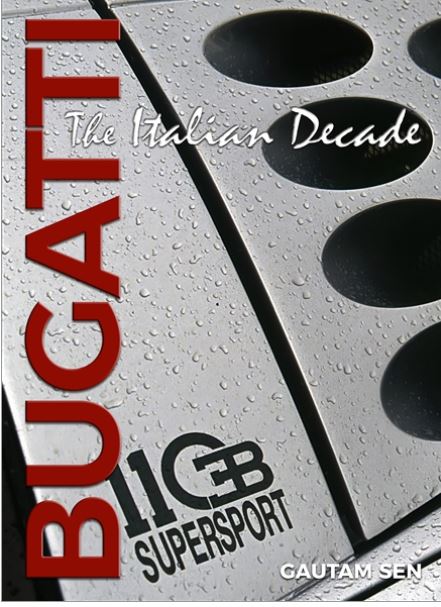
When, in 1987, Romano Artioli and his high-profile associates – Ferruccio Lamborghini, Paolo Stanzani and Jean-Marc Borel – decided to reincarnate Bugatti, one of the most famous automotive marques of all time, they had in Ferruccio Lamborghini, Paolo Stanzani and design legend Marcello Gandini, three of the most prominent names in the Italian supercar firmament, suggesting a bright future for the marque.
Eight years later, Artioli’s dream was over. Bankruptcy was declared, the factory was closed, and the beautiful campus reduced to a ghost building. Not even a decade had passed between the first germs of an idea and the end in 1995, yet there are enough ingredients for an exciting action-filled story: discord, rivalry, pride, power, money, prestige, stars, crises and a dramatic end.
What happened? Why did it happen? Bugatti: The Italian Decade answers all that and more.
- 400 pages
- Hard cover with dust jacket
- 219mm x 304mm (portrait format)
- 790 images

Learn how to maximize your profits and savings when buying and selling collector cars!
The dealership model is an American institution, and auction houses can trace their roots back to the days of dusty cattle sales. Both have remained unchanged. Since the early 2000s, the internet has shaken up these legacy methods of finding, buying, and selling vintage cars, as a global online marketplace that is open to anyone.
CarTech, in conjunction with Patrick Krook of REV! Muscle Cars, introduces a proven process drawn from 20 years of experience building some of the world’s most significant classic car collections. Whether you are a first-time buyer or an established collector, this book shows you how to locate and buy your dream collector car stress free. Get the car you are expecting every time, creating positive cash flow and keeping the hobby fun for years to come.
Inside this book is an easy-to-follow, heavily illustrated step-by-step method to find, evaluate, negotiate, close, fund, and take delivery of a collector car safely over the internet without leaving your living room. It also includes how to avoid costly purchase mistakes, such as overpaying, fakes, or buying someone else’s headache. Better yet, it delves into details about how to always sell out of advantage, minimizing the overall amount you invest as you build your collection over time. Lastly, it provides all the tools you need for buying and selling when you have that person-to-person driveway transaction.
Why spend tens of thousands of dollars on dealership retail markup, auction fees, and failed purchases when you can obtain your dream car, keep more money in your pocket, and spend more quality time enjoying the hobby? How to Buy and Sell Collector Cars takes you from being a novice to a seasoned buyer/seller while you enjoy the adventure of car collecting.
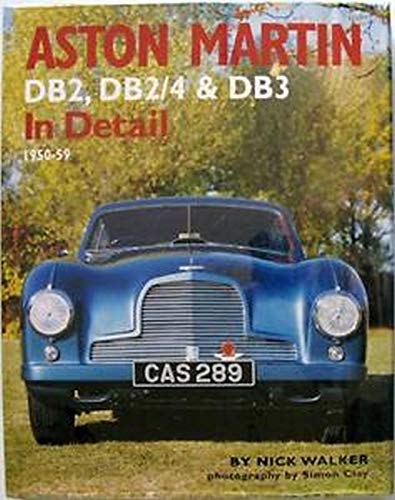
Before World War II Aston Martin had made some stunning sports cars but had undergone numerous financial crises. The company was bought by David Brown in 1947, and in 1950 he launched the all-new DB2 with a brilliant engine designed by W.O. Bentley. The car was a sleek, beautiful and fast two-seater closed coupe of the highest pedigree and led to the highly successful DB3 and DB3S racers, which were entered by the works at Le Mans, Sebring and elsewhere, driven by star drivers from Stirling Moss to Roy Salvadori. All these Aston Martins are examined and analyzed in detail here, with specially commissioned color photography of seven outstanding examples of this rare, expensive and exotic breed of sporting motor car. Models covered: DB1 1948-50, DB2 1950-53, DB2/4 1953-55, DB2/4 MkII 1955-57, DB2/4 MkIII 1957-59, plus Competition models DB3 1951-53 and DB3S 1953-56
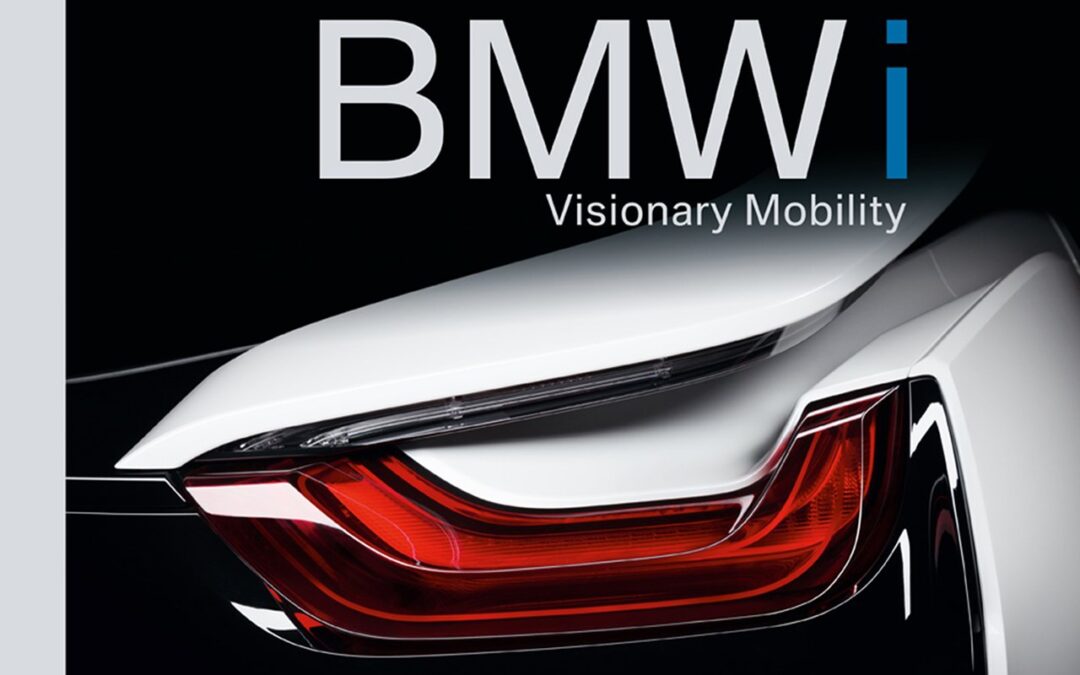
In the spring of 2008, a think tank of engineers, designers, trend researchers, and financial experts met on a factory floor of BMW’s parent plant in Munich to rethink mobility for a world of dwindling resources. Providing extensive insight into BMW’s workshop of ideas, this volume traces the venture’s design history and looks to the future of sustainable cars.
Grappling with major challenges of our time—from climate change to megacities and the scarcity of resources—contributors imagine solutions taking shape through technological innovations, networked mobility, sustainability in production, and the use of renewable materials. A unique look behind the scenes, this volume opens a window onto BMW’s complete development process, from initial conception to world premiere, presenting models for everything from plug-in hybrids with eucalyptus wood interiors to full-electric, self-driving cars. Replete with close-up photographs and fascinating model drawings, BMW i is a must-have for lovers of modern design and automobiles and for anyone interested in electro-mobility and sustainable technologies.
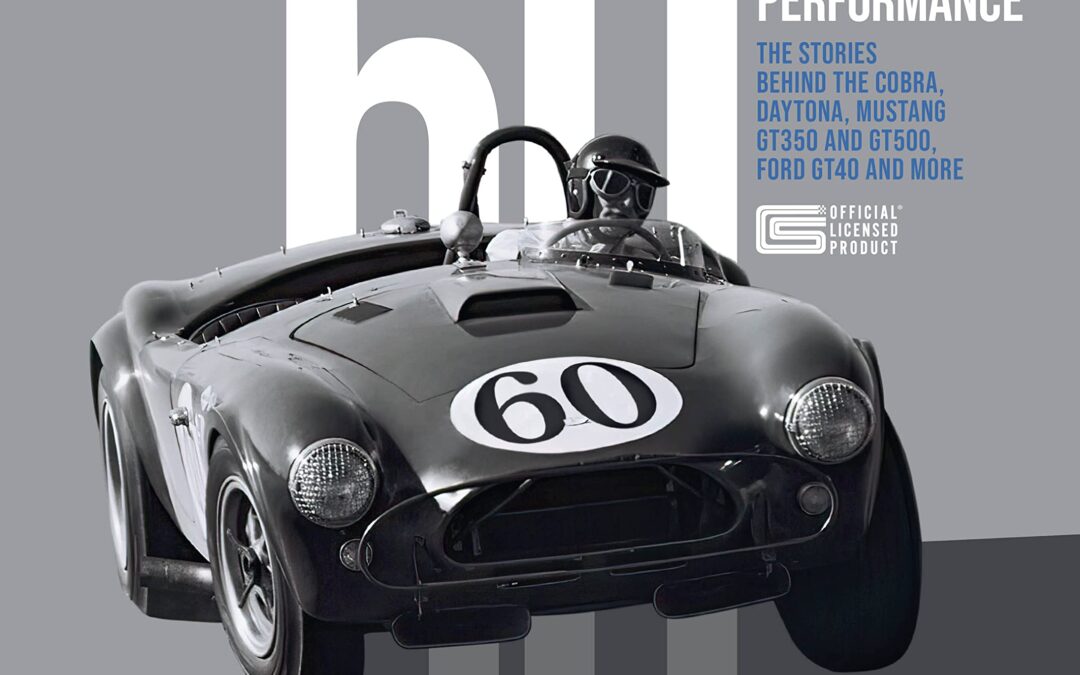
Six Decades of Shelby performance—from the first Shelby AC Cobra to today’s Mustang Shelby GT500!
A bad heart forced Carroll Shelby, one of the top racing drivers of all time, to retire in 1960. But that didn’t stop the lanky Texan from continuing to make history. He launched Shelby American in 1962 with the creation of the brilliant Ford-powered AC Cobra, soon to dominate both U.S. and international sports car racing. Shelby’s winning ways soon led to Ford seeking Shelby’s team of “hot rodders” help to make the Ford GT program a success. It worked. Shelby and Ford soon stunned the motorsports world by winning Le Mans and dominating other venues from 1966 to 1969 with the GT40. Fifty-three years later the legendary first Le Mans win of 1966 would form the basis for the acclaimed film Ford Versus Ferrari. As if the Cobra, Daytona Coupe, and GT40 were not enough, this small team of hot rodders, fabricators, and race mechanics also created the Shelby Mustang GT350 in 1965, and the GT500 two years later. Shelby American was nothing short of lightning in a bottle from 1962-1970.
Shelby American 60 Years of High Performance covers all of these early triumphs, following the proceedings from a small shop in Venice, California, to sprawling digs at LAX all the while developing new road cars, running a top race team, and giving privateer racers the cars they needed to win. Get to know Shelby, as well as the innovators who surrounded him, including designer Peter Brock, genius engineer Phil Remington, “Mr. GT350” Chuck Cantwell, and a roster of top drivers that included Ken Miles, Bob Bondurant, Dan Gurney, Bruce McLaren, Denny Hulme, A.J. Foyt, Mario Andretti, and more.
Authors Colin Comer and Rick Kopec, leading Shelby historians, follow the Shelby story through Carroll’s post-Ford relationship with Dodge, including his roles in the giant-killing, pocket-rocket Shelby Charger, GLH (“Goes Like Hell”), and GLH-S cars along with a slew of other Shelby-ized machines including his role in the birth and development of the menacing Dodge Viper.
The story of the late Carroll Shelby and the company he founded is a classic tale of ingenuity, grit, and perseverance. Illustrated throughout with rare period imagery and modern color photography, Shelby American 60 Years of High Performance is the ultimate tribute to Shelby American and the team that made it all happen.
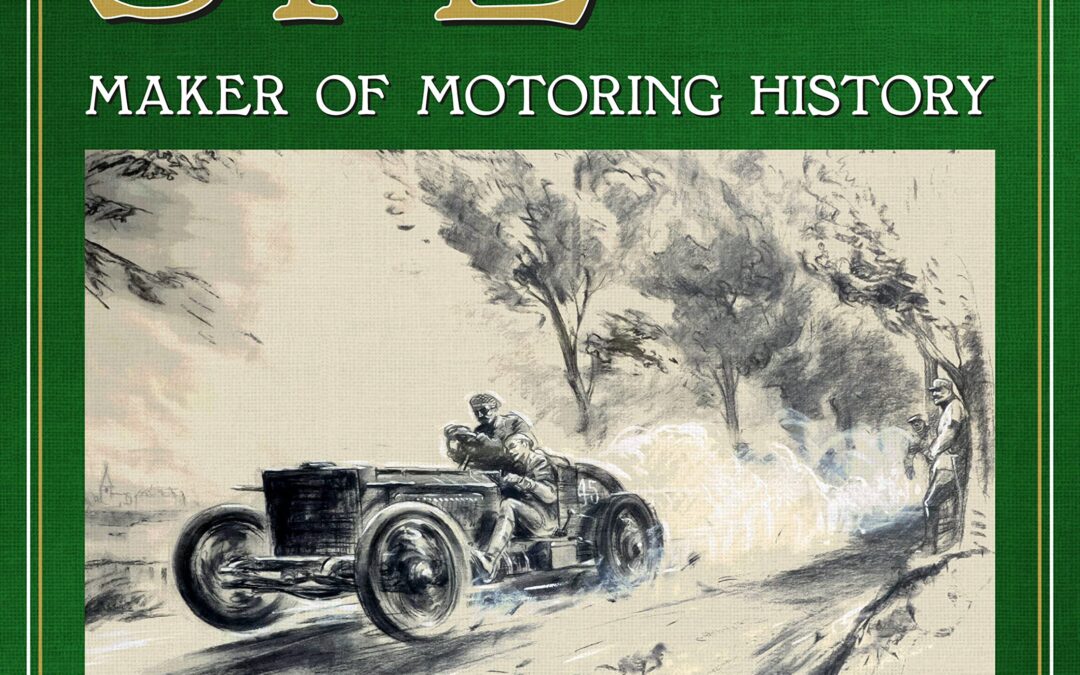
Selwyn Francis Edge, invariably known simply as ‘SF’, was a highly significant pioneer of motoring in Britain. When, in 1902, he drove a Napier to victory in the Gordon Bennett Cup, a mighty event on public roads between Paris in France and Innsbruck in Austria, he initiated serious British endeavour in motor racing.
He was deeply involved in the birth of Brooklands, setting a 24-hour solo driving record there when the circuit opened in 1907. As a towering industry figure most closely associated with Napier and AC Cars, he played an important role in the growth of car manufacture in Britain. In the words of ‘Bentley Boy’ S.C.H. ‘Sammy’ Davis, ‘His keen grey eyes, the bushy eyebrows and the hawk-like face… made him a notable figure in any assembly.’
- Dedicated cyclist: SF’s early interest in cycles led to racing achievement on two wheels and three, including setting records for round trips between London and Brighton, and taking
- Introducing the motor car to Britain: from his first driving experience, in 1897 with a De Dion-Bouton, SF quickly became an influential advocate of all things automotive in a country that initially lagged far behind France.
- Motor racing pioneer: after early competitions on motor tricycles, SF became a regular competitor in the heroic long-distance races of mainland Europe, famously winning the 1902 Gordon Bennett Cup in a Napier and becoming a national celebrity.
- Growth of Napier: with SF as a guiding force, this long-established engineering company evolved into the manufacturer of some of the finest cars of the Edwardian era.
- Brooklands: upon the circuit’s opening in 1907, SF drove a Napier solo for 24 hours at an average speed of just over 65mph, establishing a record that stood for 18 years.
- AC Cars: after the First World War, SF helped to develop AC Cars into an important manufacturer of sporting cars, with more attempts at speed records along the way.
This biography uncovers the life of an extraordinary man whose achievements deserve to be far more widely recognised.
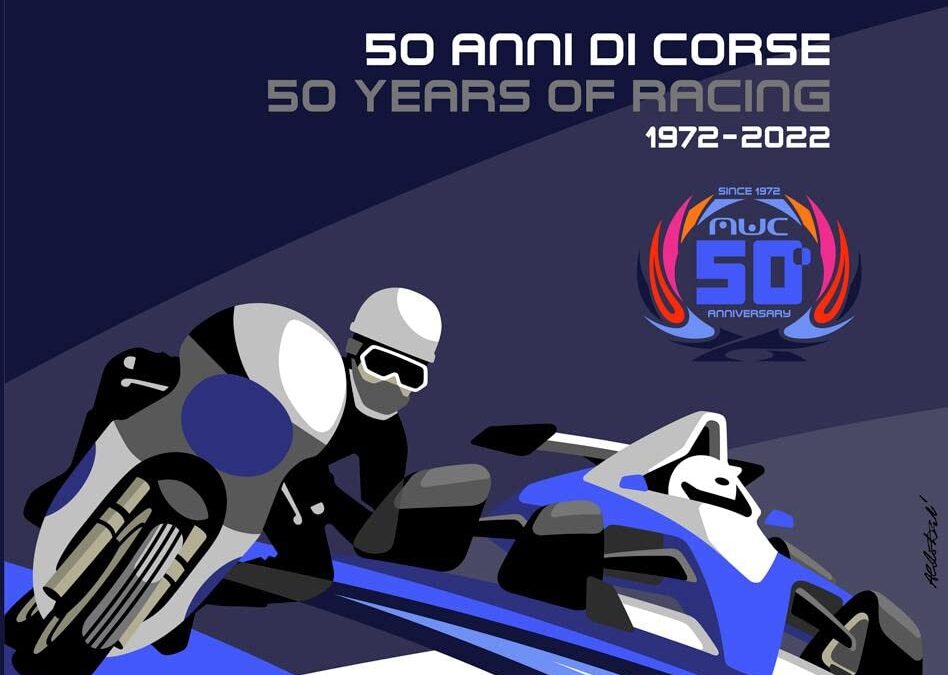
This book presents the first 50 years of the history of the Misano World Circuit “Marco Simoncelli”.
This historic track – the “Autodromo del mare” or seaside circuit – has witnessed unforgettable chapters in the history of motorsport, on two wheels and four, from the very first season in 1972 when the facility was inaugurated, through to the present day. The texts and the extraordinary photographs accompany readers along a thrilling exploration of the history of a circuit that has hosted the world’s greatest riders and drivers from every decade.
In a chronological narration that sets out from Emilia-Romagna’s Motor Valley of the early 20th century, the book describes the principal races held at the Misano circuit, from the pioneering 1970s with the unforgettable duels on two wheels involving the likes of Giacomo Agostini and Renzo Pasolini to those on four wheels featuring Italian and international drivers. Then came the 1980s, with the motorcycling World Championship arriving on the Riviera together with F.2 and F.3 single-seaters and sports prototype and GT cars. The 1990s instead heralded the Superbike championship and the Super Turismo touring cars. The new millennium has seen the circuit develop into an avant-garde facility on all fronts, capable of hosting international events and prestigious collateral events.
The volume is edited by Marco Montemaggi, coordinator and author of numerous books on Italian industrial culture and, in the motor industry, former director of the Ducati Museum and former scientific curator of the Motor Valley project. A scientific committee made up of highly experienced authors and personalities such as Andrea Albani, Davide Bagnaresi, Marco Masetti, Luigi Rivola and Sergio Remondino contributed with passion to the creation of the volume, assisted by many of the protagonists of Italian motorsport, always close to the Misano World Circuit.
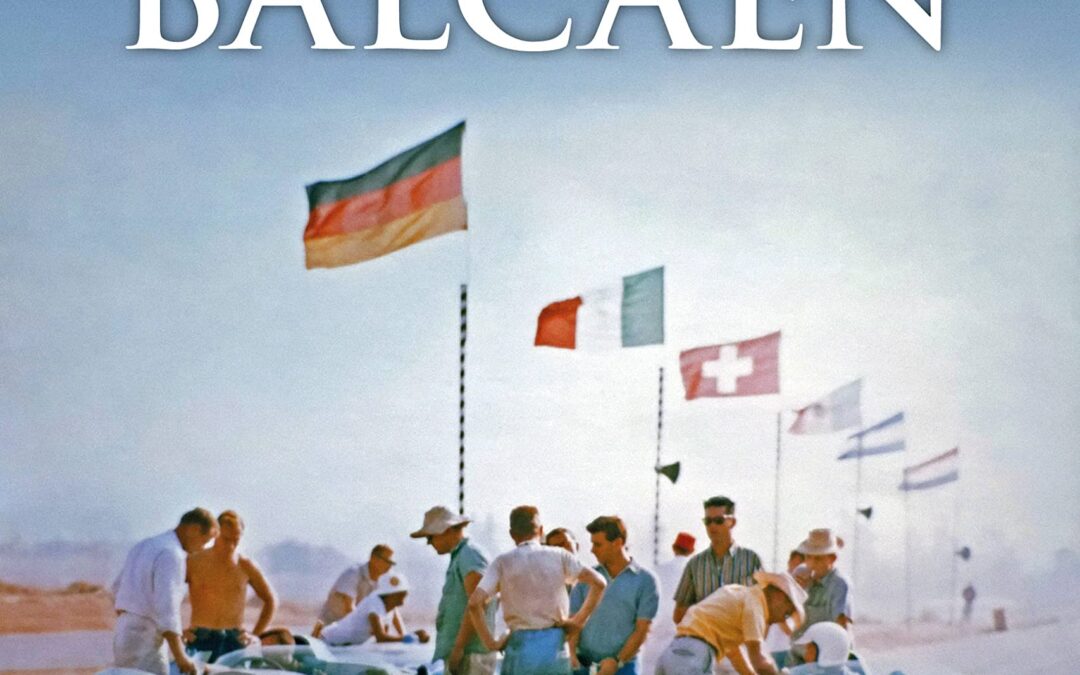
Raoul ‘Sonny’ Balcaen grew up in Los Angeles at a time when it became the epicentre of American motor racing, nurturing a vast talent pool of people whose influence has echoed through to today.
As a teenager, he successfully competed with his home-built Top Fuel dragster during the formative years of the sport. With Lance Reventlow, he worked on the famous Scarab sports cars and was standing in the dyno room when the team’s all-American Formula 1 engine was fired up for the first time. A period as Jim Hall’s crew chief and a close association with Carroll Shelby added to the know-how that guided him towards becoming a successful entrepreneur and led to all that followed.
- Aged 17, Balcaen built his own Top Fuel drag racer, the ‘Bantamweight Bomb’, which he developed relentlessly and drove to many successes.
- His role in the fabulous Scarab sports cars — the landmark all-American racers — and insights into life with their creator, the incomparable Lance Reventlow.
- Working as crew chief to the brilliant Jim Hall, preparing and running his Lotus Eleven and Lister-Chevrolet long before the famous Chaparrals emerged.
- A second spell with Scarab, this time with the Formula 1 project — the first American Grand Prix car — plus a special job for Reventlow converting a Scarab sports racer into a street car.
- Onwards into setting up his own successful business, IECO (Induction Engineering Co), to create and sell high-grade performance and appearance accessories, with Chevrolets — especially Corvair and Vega — featuring strongly.
- His many-faceted dealings with Carroll Shelby, leading to consultancy and even assignments as occasional Shelby American company pilot.
- Along the way we meet many other big names of the era, including Chuck Daigh, Bruce Kessler, Warren Olson, Dick Troutman, Tom Barnes, Phil Remington, Ken Miles, Leo Goossen, Jim Travers, Frank Coon, Ed Donovan and Pete Brock.
This engaging memoir is the very personal history of a momentous time and place in which we meet a who’s who of West Coast road-racing heroes.


